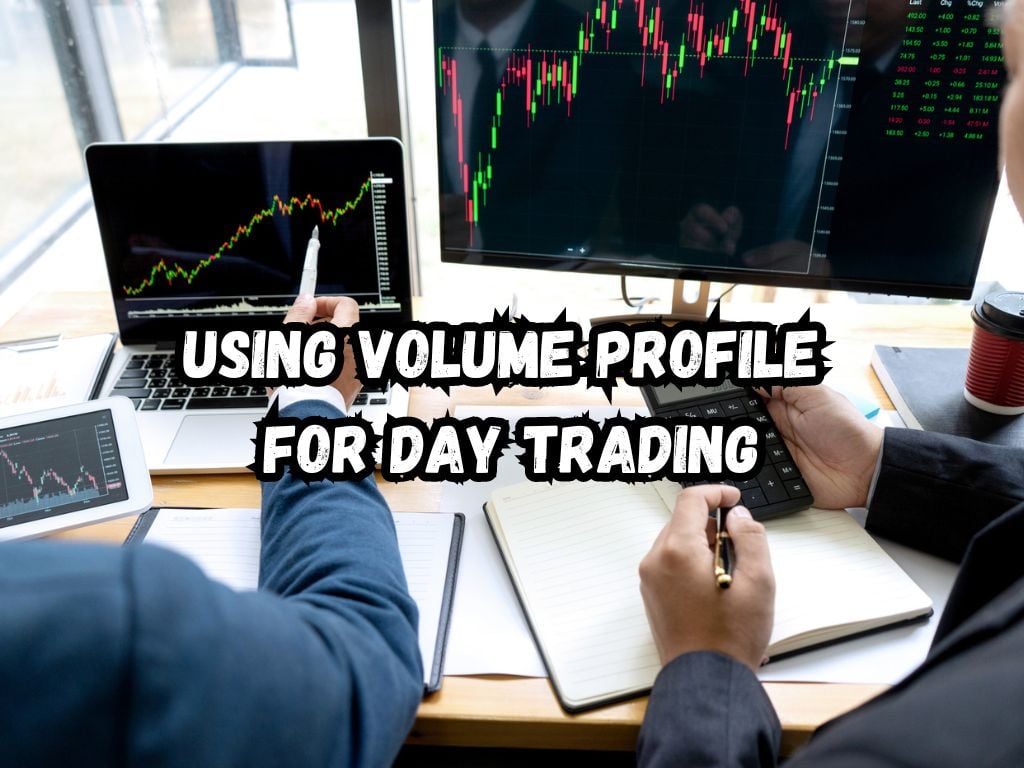Day trading is a fast-paced world where seconds can mean the difference between profit and a missed opportunity. Traders are always on the lookout for tools that sharpen their edge.
One such tool is Volume Profile, a vital yet often overlooked element that can add depth to market analysis.
In this article, we will delve into the nuts and bolts of using volume profile for day trading, helping you understand this concept and how it can benefit your trading strategy.
What is Volume Profile?
Volume Profile is a charting tool that displays trading activity over a specified time period at specific price levels. Unlike traditional volume indicators that show the amount of shares traded during a given time, Volume Profile reflects volume at different price points.
The tool offers a visual representation of how much volume has occurred at each price level and is assumed to indicate key areas of high or low market activity.

Understanding the Basics of Volume Profile
At its core, Volume Profile is built on key elements such as Value Area, Point of Control, High Volume Nodes, and Low Volume Nodes.
Components of Volume Profile
The Value Area is where a large portion of the trading activity has occurred, typically encompassing around 70% of the total volume.
Within this chunk of activity, there’s a single price level that has seen the maximum volume. This price level is known as the Point of Control. It’s a critical area that can act as a strong support or resistance.
High Volume Nodes indicate price levels with significant trading activity, suggesting the acceptance of prices by market participants. On the flip side, Low Volume Nodes are price areas with minimal trading, often pointing to price rejection.
Reading the Volume Profile
To effectively interpret Volume Profile, one must focus on the POC as a central reference point. Prices near the POC may indicate stability, as this is a price level agreed upon by buyers and sellers alike.
In contrast, High Volume Nodes could act as barriers to price movement, while Low Volume Nodes could be seen as gateways for rapid price changes.
How to Use Volume Profile for Day Trading
Properly setting up and implementing Volume Profile within your approach can be the linchpin to a successful day trade.
Setting Up Volume Profile
One first needs to select the right platform that offers Volume Profile as part of its charting suite.
Once chosen, setting up the tool involves defining the period under review, whether it encompasses a trading day, week, or month.
Identifying Trading Opportunities
With the POC as a starting point, traders can identify potential entry and exit points. Prices gravitating towards the POC might present stable buying or selling opportunities.
Breakouts from High and Low Volume Nodes can signal a potential trend in the making, and movements into or out of the Value Area could signify trend confirmations or reversals.
Risk Management with Volume Profile
Knowing where to set stop-loss orders can be as important as knowing when to enter a trade.
Volume Profile allows traders to spot logical levels for stop placement, such as just outside of the Value Area or beyond High Volume Nodes that serve as potential support or resistance.
Volume Profile and Market Context
It’s not wise to rely on Volume Profile alone. A combination of other technical indicators like moving averages, and an understanding of broader market sentiment can add invaluable context to the insights provided by Volume Profile.
Advanced Volume Profile Strategies
Cumulative Volume Delta (CVD)
CVD is a momentum indicator that can highlight the strength of price moves. By measuring buying and selling pressure, it can add a layer of depth to the information provided by Volume Profile.
Employing Volume Profile for Scalping Strategies
Scalpers may find Volume Profile useful in identifying entry and exit points on a very short-term basis.
This is done by recognizing price areas where they can enter and exit trades quickly, capitalizing on small price movements.
Adjusting Your Approach During High Volatility Periods
Volatility can distort volume distributions. Understanding how to readjust your interpretation of the Value Area and POC during these times is crucial to maintain trading effectiveness.

Practical Tips and Best Practices
When using Volume Profile, it is easy for traders to get tripped up if they don’t tread carefully. It’s important to backtest any strategy that incorporates Volume Profile to ensure its effectiveness.
Also, be wary of over-relying on any single indicator and instead, consider Volume Profile as one piece of a comprehensive trading plan.
Additionally, remember that settings for Volume Profile may require tweaking depending on the market you are trading in. Stay aware and be willing to adjust as necessary.
Frequently Asked Questions
Can Volume Profile be used for all types of assets?
Volume Profile is versatile and can be used across various asset classes including stocks, futures, and Forex.
How does Volume Profile differ from Volume At Price?
While they both measure volume at different prices, Volume At Price usually represents a static historical viewpoint, whereas Volume Profile provides a more dynamic, real-time perspective.
What are the technical requirements for running Volume Profile analysis?
A trading platform that supports Volume Profile and the computational power to run it smoothly are the main requisites.
Is Volume Profile suitable for beginner day traders?
While it may have a steep learning curve, Volume Profile can be a valuable tool for beginners, provided they invest time in understanding and practicing with it.
How to interpret sudden changes in Volume Profile?
Sudden changes in Volume Profile can indicate a shift in market sentiment or the entry of major players. Traders should watch out for these anomalies as they could precede significant price moves.
Conclusion
Volume Profile is an advanced technical analysis tool that requires practice and finesse to be used effectively.
Its ability to highlight key trading areas makes it an invaluable asset for day traders looking to understand price movements on a deeper level.
However, it is not a silver bullet and should always be used in concert with other indicators and sound risk management practices.
In day trading, every bit of information counts, and Volume Profile helps you to see through the noise and make informed decisions. With the guidance provided in this article, and through diligent practice, you can begin to implement skills in your own day trading endeavors.


 Tags:
Tags:










